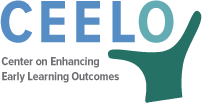Early care and education (ECE) is a system of systems serving children birth through eight years of age. The system is composed of public and private programs, including those considered for- and non-profit and faith-based. Similarities and differences appear across programs within the diverse ECE sector. In many situations, services may be combined to create a mixed-model program.
- Prekindergarten (Pre-K) – Typically operated for 3- and 4-year-old children by public school systems. Currently, 44 states, the District of Columbia and Guam operate state-funded pre-K programs, each with its own set of guidelines and requirements. Detailed information on pre-K programs is recorded in The State of Preschool yearbook published by the National Institute for Early Education Research.
- Head Start – Begun in the 1960s as part of the War on Poverty, Head Start is a federally funded national program striving to serve 3- and 4-year old children whose families live in poverty. Federal funds are distributed to communities to serve eligible children based on federal rules in programs meeting federal Performance Standards. NIEER recently reported on the State(s) of Head Start: National figures (2016). Early Head Start is a similarly operated program for children under 3 years of age.
- Child Care– States regulate child care programs whose purpose is to provide a safe, nurturing, and stimulating environment when parents are not caring for their children. Federal funding for child care is made available to states, often in the form of tuition subsidy for parents to attend regulated programs. Child care programs may operate as centers, family child care homes, or programs exempt from state regulation as may be the case for faith-based programs in some states. Child care regulations vary significantly across states and may even differ within states based on the type of program. Child care is primarily funded by parents. Parents find child care through word-of-mouth or by contacting a resource and referral center.
- Early Intervention/Early Childhood Special Education (EI/ECSE) – Federal and state funds are available to allow children with suspected or confirmed developmental disabilities to receive specialized services such as home visiting or classroom services at minimal or no cost. EI targets children and families who are under 3; ECSE serves children with diagnosed disabilities from 3 – 6 years. EI may be operated through the state Dept. of Health or Dept. of Education or both. It is the responsibility of the state Dept. of Education to ensure ECSE services are delivered to all eligible children through the local education agency.
- Home Visiting (HV) – HV is more of a method of service delivery than an actual program. In most cases, HV services are those delivered through state and regional health systems to at-risk, expectant families or those whose children are infants or toddlers. HV often focuses on child well-being and parenting education with services delivered by trained health professionals.
- Public Education (K – 3) (Ready Schools) – The vast majority of children 5 years and older are enrolled in the public education system from kindergarten onward. Kindergarten is increasingly offered full-day though some states only require local districts to provide a part-day program. Public education is accessible and free to all children, with supplemental services frequently provided when funds are available.
Each state may address early care and education in unique ways suited to the context of their state. For example, several states have created separate state agencies to integrate all services for children between birth through five years. Other states incorporate specific birth through five services as part of the Department of Education or Department of Human Services. These variations may be attributed to the incremental introduction of new initiatives over time or strategic reform-oriented decisions taken by the state.
